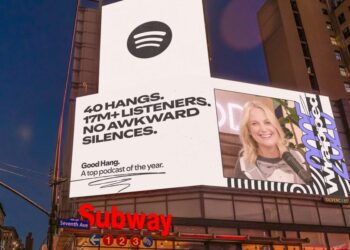Last week’s elections have hardened quickly into today’s broad strategic wisdom: American politics is now, above all, about affordability, sometimes also called “cost of living.”
The terms imply a new political landscape, defined by challenges emerging in the aftermath of the pandemic emergency — inflation and interest rates, housing costs and grocery costs and energy costs — which politicians have been slow to acknowledge and policy slow to address.
But there is another way of looking at the pattern, too: a resurgence of the politics of inequality, obscured for almost a decade by culture wars both left and right, but which seemed absolutely central to American politics before Donald Trump and the backlash to him swamped everything else.
In the wake of the financial crisis and Occupy Wall Street, the Tea Party and Thomas Piketty, it seemed the country was preoccupied with the matter of the haves and the have-nots. On the left, Bernie Sanders built a formidable coalition by railing against billionaires; even Hillary Clinton read the room, turning against the Trans-Pacific Partnership and delivering a kind of America First speech at her nominating convention, though she was hardly a natural populist and also attacked Sanders by asking whether breaking up the big banks would end racism. On the right, Trump mobilized critical swing voters in the deindustrialized heartland — and inspired commentators to attribute his victory to the resentment of the left behind. “I am your voice,” he roared at the Republican National Convention, and though, coming from the mouth of a cartoonish oligarch, the claim was absurd, it was also obvious he wasn’t pledging fealty to the 1 percent.
Eight years later, both parties had drifted away from inequality, though Americans routinely complained to pollsters about the cost of living, and disaffected voters were so desperate for a solution that they swung pretty wildly from one party to another in search of it. Last November, Democrats were widely seen as a culture war coalition, patronizing voters by insisting that the economy was humming. One high-profile research firm found that Kamala Harris’s best-testing ad was one that addressed cost of living by promising to fight landlords and price gougers; the campaign chose to focus instead on the risks to democracy posed by a second Trump term. Republicans won critical support from those feeling pinched by prices but nevertheless preferred to speak about the damage done by cultural elites, closing hard with anti-trans fear-mongering as Trump very openly expanded the oligarch wing of the MAGA coalition and moved plutocratic opportunism center stage.
One thing that is striking about this turn is that the intervening years had hardly halted the growth of billionaire wealth and, despite some progress during the pandemic, inequality itself had not really improved much, either. The richest Americans often describe the last decade in Randian terms, as a war on business, achievement and greatness. But the numbers tell a different story. The simplest conventional measure of inequality, called the Gini index, is higher today than at any point in modern American history except for a peak in 2018-19 (and barely below that high).
And because that measure reduces the entire topography of the American economy to a single figure, it also flattens an awful lot of complexity. When you look a bit more closely, there are some measures suggesting some progress, and other data points that suggest, if anything, things are going in the wrong direction. Sixty-nine percent of America’s wealth is held by families in the top 10 percent. The investment holdings of those same families have grown even more dramatically — about threefold, from roughly $15 trillion in 2010 to more than $45 trillion today.
At the very top, some of the changes are even sharper. Between 1989 and 2022, households in the top 1 percent added about 100 times as much wealth as households at the national median, according to Oxfam, and almost 1,000 times as much as a household in the 20th percentile. The share of all U.S. wealth held by the top 0.00001 percent has nearly doubled over the last decade, according to calculations by the economist Gabriel Zucman. And according to recent polling by YouGov, 96 percent of Democrats, and 68 percent of Republicans, believe the rich have too much political power in this country.
In New York City, where Zohran Mamdani won this year’s most dramatic victory on an affordability argument in the mayoral election, costs of living have grown significantly since Covid-19 struck, but real hourly earnings have fallen pretty significantly, according to the Bureau of Labor Statistics. According to a report from the New School, New York is the only major city in the country to see a statistically significant decline in real median household income between 2019 and 2024.
Since Mamdani’s shock Democratic primary victory in June, skeptical commentators have attributed his performance to a kind of left-wing fever among the overeducated and underemployed. In The Times, Eliza Shapiro called it the “revenge of the struggling yuppie.” Elsewhere, John Carney described his voters as “Park Slope populists”; Reihan Salam called them “downwardly mobile elites.”
Factually, this is really only one piece of Mamdani’s coalition, and focusing on it risks misunderstanding the broader alliance. The mayor-elect only lost voters making under $30,000 and those making over $300,000, according to exit polls, beating his rival Andrew Cuomo among nonwhite people who didn’t graduate from college by a margin of nine points and making big gains since the primary with Black voters, particularly in the working-class Bronx.
The “Park Slope populists” framing also overlooks the lessons of the affordability campaigns run by Abigail Spanberger in Virginia and Mikie Sherrill in New Jersey — Democratic candidates who present as suburban moderates but ran promising things like a Day 1 war on the cost of living, a freeze on utility rates, fights against pharmaceutical price gougers and strengthening assistance programs for first-time home-buyer. “I am fighting for you,” Sherrill declared in her campaign’s closing days. “I’m not doing a 10-year study; I’m not writing a strongly worded letter. I’m not going to convene a group. I’m declaring a state of emergency.”
On culture war issues, it has been possible in recent years to flatter the right with a story about educational polarization and class realignment that presents progressives as out-of-touch elites. That this pattern is echoed around the wealthy world gives it plausible credence, and in other ways, too, the caricature is not entirely unfair — the liberal coalition is full of well-to-do progressives, some of whom may be feeling more economic anxiety than their bank accounts or degrees really imply.
But peel back the layer of cultural resentments, and what do you see? A decade ago, Piketty introduced the meme formulation “r>g” to illuminate an economic pattern in which the owners of capital grow wealthier much faster than those earning their incomes through labor. It may also illustrate a political one, in which knowledge workers and service workers find themselves increasingly aligned with one another, if not perfectly so, because the division between those making five figures and those making six matters less than the division between those who have significant bundles of investment capital and those who don’t.
As the great American anti-egalitarian Peter Thiel put it last week, reflecting on the election results, “If you proletarianize the young people, you shouldn’t be surprised if they eventually become communist.” It was barely a year ago when we were told young voters were stampeding right.
The post The Haves and Have-Nots Are, Once Again, at War appeared first on New York Times.




